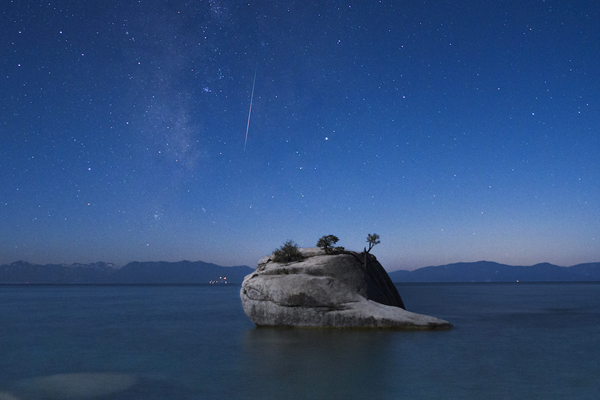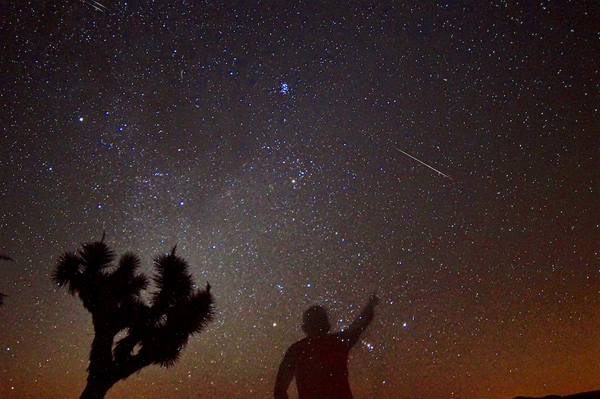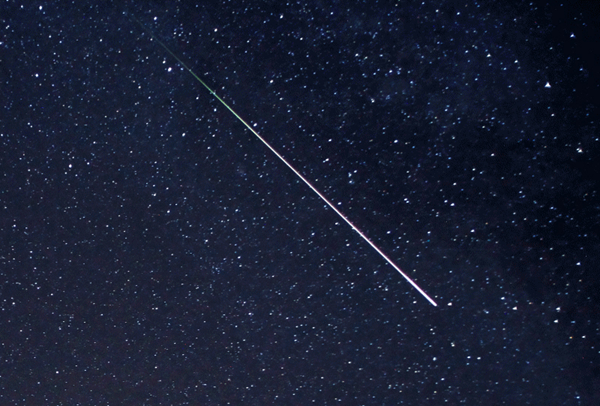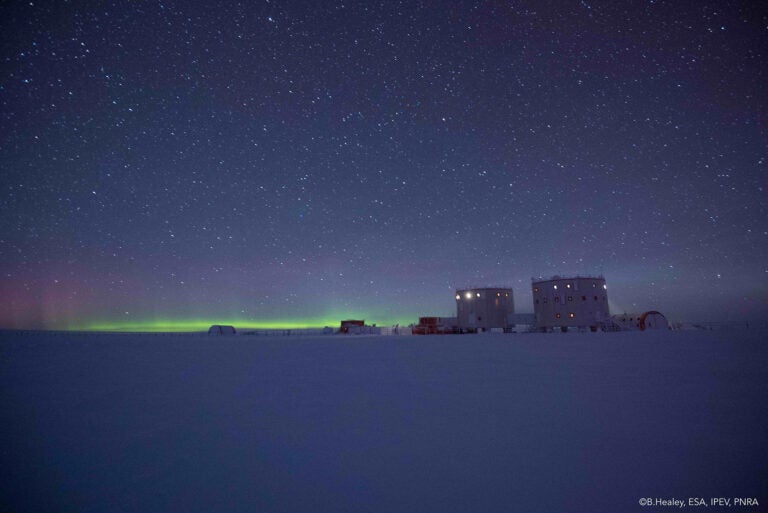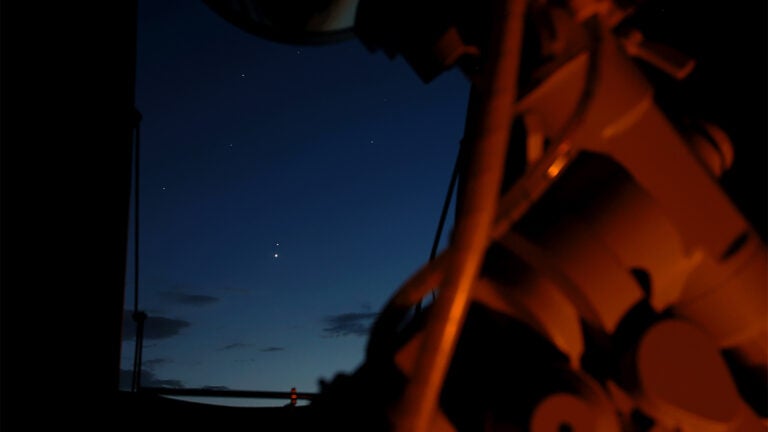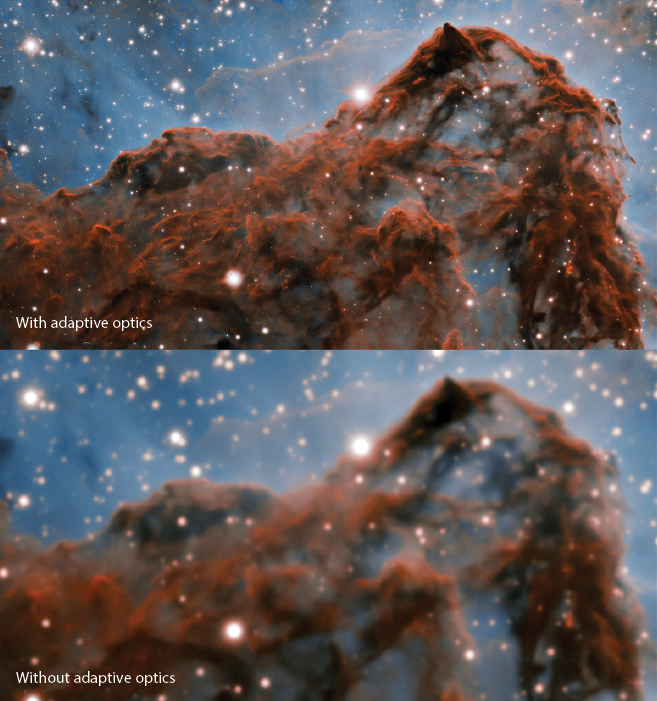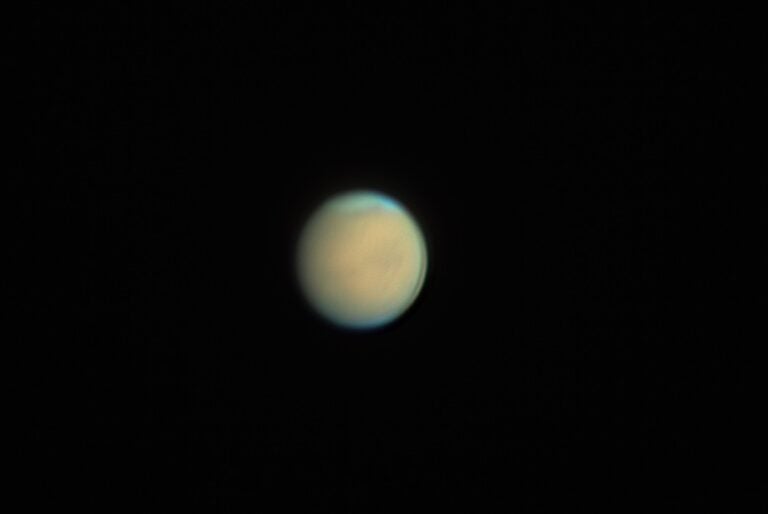Perseid meteors create long, bright streaks at night that are easily visible to the naked eye. In fact, I’d recommend leaving your telescope at home, as using one will limit your view so much that chances are slim you’ll see a meteor through it. Binoculars, on the other hand, take in more of the sky. While you shouldn’t watch the shower through them, they will make any smoke trails left by bright meteors easier to see.
In 2021, the Perseids peak midday on Aug. 12 in the U.S. The best time to view them will be either Wednesday night the 11th through Thursday morning the 12th, or Thursday night the 12th through Friday morning the 13th. The Moon, which is the determining factor in how great a show each year’s Perseids will put on, will be a thin crescent only three to four days past New, so it will set in the early evening, before the main event begins.
What’s going on?
A meteor is a small (think grain of sand) particle of rock or metal that enters Earth’s atmosphere, begins to glow because of friction, and creates a blazing column of gas as it burns up. No meteor from a shower is big enough to survive the burn and land on Earth as a meteorite.
Most meteor showers come from comets. When comets approach the Sun, our star’s heat turns the comet’s ice to gas. This frees trapped dust particles that continue to orbit the Sun along the comet’s path. (December’s Geminid meteor shower is an exception to this rule, as its particles originated with an asteroid, 3200 Phaeton.) These particles are called meteoroids. When Earth encounters this trail of particles — which occurs around the same date each year — they enter our atmosphere and create a meteor shower.
Perseid meteors are particles from Comet 109/P Swift-Tuttle. American astronomers Lewis Swift of Marathon, New York, and Horace Tuttle, at Harvard Observatory in Cambridge, Massachusetts, discovered the comet in July 1862, when its brightness was magnitude 7.5. Within just two months, however, it reached magnitude 2. Swift-Tuttle orbits the Sun every 133 years and 102.3 days. It last came closest to the Sun on Dec. 11, 1992.
The lone major meteor shower that seems to contradict this rule is the Quadrantids, which peak in early January. But its name actually follows the rule — in this case, however, Quadrans Muralis, the constellation it’s named after, no longer exists. When the International Astronomical Union formalized the constellation boundaries in 1928, Quadrans Muralis disappeared and became part of the constellation Boötes.
2021 forecast
Although this year’s Perseids peak Aug. 12, the shower actually begins when Earth reaches the edge of the meteoroid stream July 17 and continues until our planet exits it Aug. 24. Of course, the farther you observe from the peak, the fewer Perseids you’ll see.
The main question each year for any meteor shower is, “How many meteors will we see?” Meteor observers start with a number called the Zenithal Hourly Rate (ZHR). The ZHR for any shower is the number of meteors per hour that an observer could see under a true-dark sky (no scattered light), assuming that the radiant is at the zenith (the point directly overhead). The Perseids’ ZHR is 110.
If you start observing on the 11th or 12th at the end of astronomical twilight (the moment no sunlight remains in the sky) when the radiant is low on the horizon, you can expect to see perhaps 20 Perseids per hour, or perhaps a few less because the crescent Moon will still be up. Its light will mask some of the fainter meteors, although the bright ones will still be easy to see. The hourly number will increase as the radiant climbs higher.
Observers generally record higher hourly rates after local midnight because Earth has rotated so their location is heading into the stream. Before midnight, meteors must catch up with Earth. So, taking into account the increase in the rate after midnight, you might expect to see 60 meteors per hour from a dark observing site. Note, though, that this doesn’t mean “one per minute.” Meteor arrivals are notoriously random. You might see six over the course of one minute and then none for the next 15.
The plan
Meteor watching can be an enjoyable social event. The atmosphere is casual, so you can carry on conversations, eat, and record your sightings. You can choose to watch for five minutes or five hours. Obviously, your viewing odds go up the longer you watch.
As I mentioned earlier, no telescope is required, but a few items will make the night more comfortable for you. The most important is a reclining chair. The best plan is to face a region of sky about 30° away from the radiant. For reference, an angle of 30° is one-third the distance from the horizon to the zenith.
Other things you might want to bring are insect repellent, light snacks, and a warm or cold drink, depending on where you’re observing. If your weather is likely to be a bit cold, packing a blanket is a good idea. If you observe at a location with high humidity, a simple plastic tarp will keep you dry all night.
This is the year
If you commit to watching the Perseid meteor shower for more than just a few minutes, it will not disappoint you. The high number of meteors per hour and relatively warm northern nights make this an easy event to view. And this year, the Moon won’t be a problem. In fact, the next time the Moon will be this favorable for Perseid watching is 2025. So, pick a dark observing site, grab some friends, and go see stars fall from the sky.

